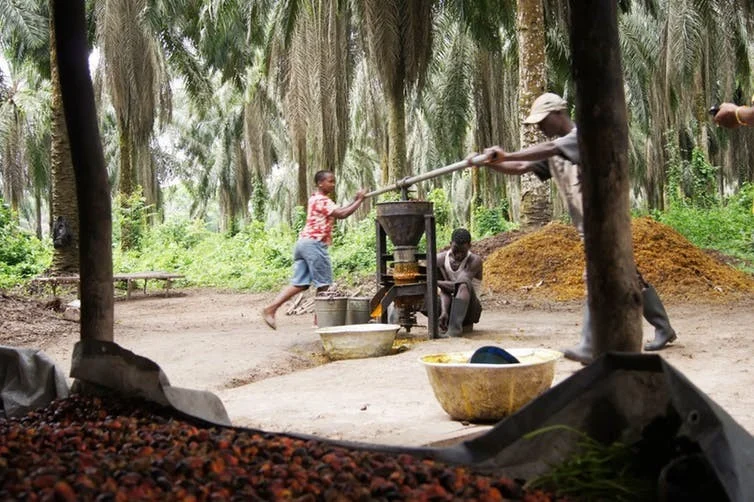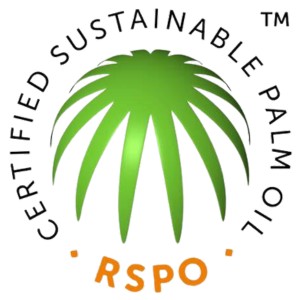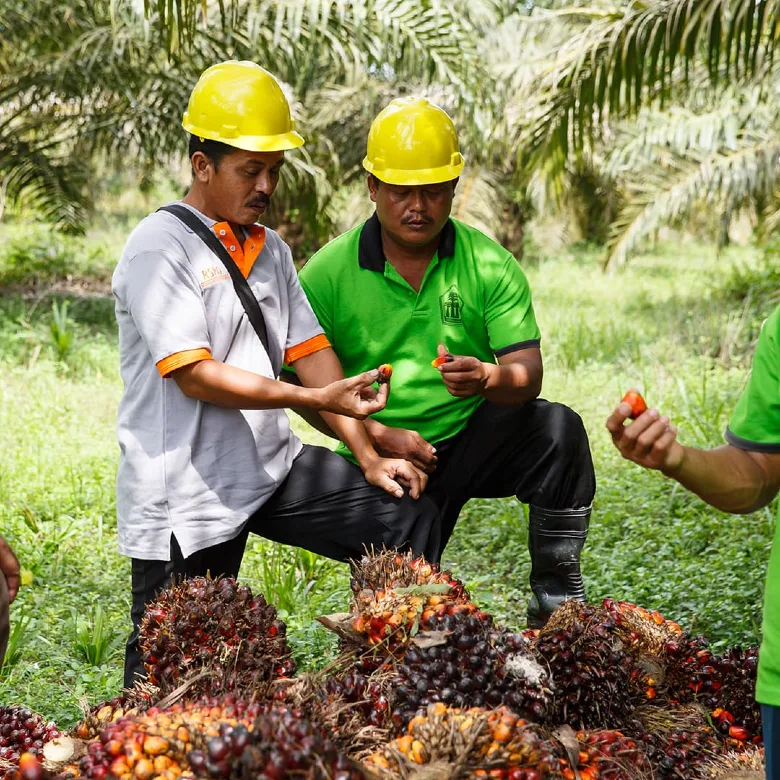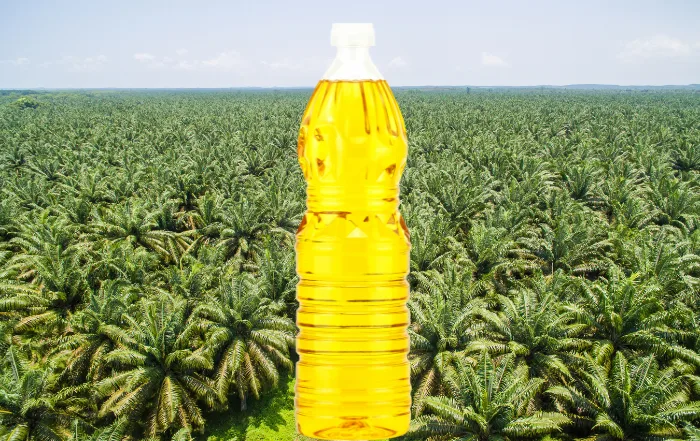You know what’s fascinating? Palm oil. It’s the most consumed plant oil in the world. Seriously, it’s everywhere! You’ll find it in processed foods, soaps, cosmetics, biofuels—you name it.
Take a look at the products in your home, and chances are, palm oil or its derivatives are lurking somewhere.
But is that a bad thing, you ask?
Well, from an environmental standpoint, it’s probably not great. But honestly, finding alternatives that are much better is quite challenging. Maybe we should consider cutting down on our greasy indulgences instead. Yeah, that might be a smarter move.
Let’s dive into the world of palm oil. The story begins with the oil palm fruit. When the fruit’s meat is crushed, voila! Palm oil is born. There’s also a kernel inside, which can be crushed to obtain palm kernel oil. So, from one fruit, we get two different kinds of oil. The former is commonly used for cooking and was made in Ghana.
In West Africa, palm oil has been a staple cooking oil for thousands of years in its relatively unrefined form. It has a strong taste—bitter and vegetal, with a hint of the spices in my drawer. And did you notice its vibrant color? That’s thanks to keratinoids, the same compounds that give carrots, tomatoes, and salmon their orange hues.
However, the palm oil used in processed foods undergoes various treatments to make it tasteless, odorless, and colorless. Oh, and did I mention it’s thick too?

Here’s a fun fact: Palm oil is 50% saturated fat, which makes it semi-solid at room temperature.
And if you think that’s impressive, palm kernel oil takes it up a notch—it’s a whopping 80% saturated. These fats behave more like animal fats, which are also highly saturated. As a result, they stay solid or semi-solid at room temperature and have a longer shelf life.
Now, where I come from in the American South, cottonseed oil used to be abundant, but it didn’t stick around for long.
It went bad quickly because it’s mostly unsaturated and liquid.
However, some genius figured out a way to make unsaturated fats more stable and viscous by adding hydrogen atoms.
That’s how crystallized cottonseed oil, famously known as Crisco, came to be.
But with palm oil, there’s no need for fancy industrial processing—it’s already saturated. That’s a rare property for a plant oil to have.
Coconut oil, on the other hand, is even more saturated, but coconut palm trees don’t yield as much oil as oil palm trees. These oil palms are insanely productive!
Let’s travel back in time for a moment. When the slave trade was outlawed, British traders saw an opportunity in palm oil and utilized the existing infrastructure from the slave trade era. The oil palm trees grew naturally in the Niger Delta and surrounding areas.
The canoes that once transported human beings during the slave trade were repurposed to shuttle palm oil.
It played a significant role during the second industrial revolution, particularly in soap production, as people working in factories needed effective cleaning agents.
Palm oil was also used for lighting lamps and eventually found its way into margarines.
Ah, margarine—the butter replacement made from oil.
But here’s the catch: Some margarines were made with palm oil, which is naturally saturated. Others were made with unsaturated oils that were partially hydrogenated, resulting in trans fats—the worst kind of fat you can consume, according to medical science.
Fortunately, trans fats have been largely eliminated from processed foods, including Crisco, which used to contain them in larger amounts.
Nowadays, it’s mostly palm oil you’ll find in there. While eliminating trans fats was a step in the right direction, it’s only part of the palm oil story.
So, why is palm oil so popular? Well, for one, it’s naturally well-suited to many commercial applications. It’s versatile and cheap, making it an attractive choice for manufacturers. But why is it so affordable?
One reason is the remarkable productivity of oil palm trees. They yield an incredible amount of oil per acre of cultivated land—miles ahead of any other oil crop. However, there’s another side to the story—stolen land and slave labor.
The palm oil industry’s modern history began when the oil palm tree was introduced to Southeast Asia. Malaysia and Indonesia are the major palm oil producers today.
The tropical belt around the world, where the oil palm tree thrives, was also the prime region for rubber tree plantations during the colonial era. As synthetic rubber gained popularity, these plantations transitioned to oil palm.
After gaining independence, governments in Malaysia and Indonesia sought to alleviate poverty by encouraging small-scale oil palm cultivation. Once the industry learned how to process palm oil into various forms, its global demand skyrocketed.
Unfortunately, this rapid expansion came at a devastating cost—deforestation of vital tropical rainforests.

The resulting habitat loss has had a significant impact on various species, including the beloved orangutans, and seeing them lose their homes to oil palm plantations is heart-wrenching.
But humans are also affected by this industry. In Malaysia and Indonesia, where the majority of palm oil is produced, labor conditions are often deplorable. Many plantations rely on imported labor, often from Bangladesh or Myanmar.
These workers are lured under false pretenses and end up in exploitative situations. Their passports are confiscated, they endure abysmal wages, and escape attempts become their only hope.
To address these issues, some countries have banned imports or imposed sanctions on certain palm oil producers. However, tracing the origin of oil once it enters the international commodities market and refining process is extremely challenging. The problem of palm oil goes beyond labor abuses—it involves stolen land too.
Take Liberia, for example.

The government there rents jungle land to large companies for palm oil production, displacing local communities. Those who live traditional lifestyles often lack the means to defend their rights and are easily exploited. Corruption also plays a role (as it often does when governments are involved), as companies forge alliances with government officials at the expense of the people and the environment.
As conscientious consumers, we can attempt to reduce our palm oil consumption.
Approximately two-thirds of palm oil is consumed in foods, particularly pre-packaged baked goods. Yet, it’s challenging to avoid palm oil entirely because it’s often hidden under different names or blended with other oils. Even personal care products like toothpaste, makeup, shampoo, and moisturizers may contain palm oil.
If you’re looking for a sustainable option, keep an eye out for products labeled with the RSPO logo.

The Roundtable on Sustainable Palm Oil confers this label, indicating a commitment to responsible practices. However, even this certification has its challenges, as workers have reported scripted interviews and questionable practices during RSPO inspections.


Roundtable on Sustainable Palm Oil (RSPO) is a global, non-profit organization with over 5,000 voluntary members. They’re focused on bringing together all players in the palm oil supply chain to develop and implement global standards for sustainable palm oil.
While the RSPO may have good intentions, some of its members have a long history of greenwashing and there have been reports of employees being coached, threatened and even retaliatory actions taken against them during RSPO visits (as pictured above).
More To Discover
- Bill Gates-Backed Bioscience Firm Will Release a Vital Palm Oil Substitute Called Palmless
- Can There Be Sustainable Tropical Forest Harvesting? Yes! 5 Strategies To Get It Done
- Vanishing Forests: Unveiling the Global Threats and Urgent Solutions (We Name Names)
- Planting Trees in the Wrong Places Can Warm the Planet
It’s easy to fixate on one product or ingredient and place the blame on it. However, we need to recognize that consumption patterns and habits play a larger role. As individuals, we should strive to consume less overall. It’s not just about palm oil—it’s about making conscious choices and embracing a more mindful lifestyle.
Interestingly, the country that consumes the most palm oil is India, where it’s used as a cooking oil and in numerous snack products. Street vendors in India, despite denying its use, often rely on palm oil due to its affordability. While it may be tempting to feel morally superior by refusing certain products, true change requires a broader perspective.
So, armed with this knowledge, what will you do? The decision is up to you. This is the story of palm oil, how it ended up in almost everything, and why it has concerned many knowledgeable individuals.




















